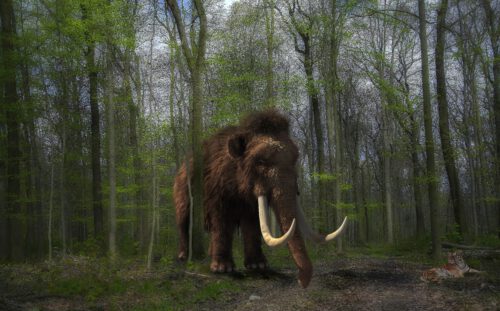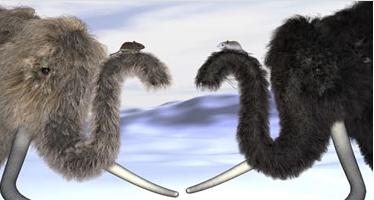A gene reveals the color of the mammoth's fur

The fur color of the mammoths that roamed the earth thousands of years ago has now been identified by scientists. It turns out that some of these mighty animals had dark brown fur, while others were peony, (albeit somewhat pale in color), or even blonde.
The information came from testing the genetic composition in the bone of a 43 thousand year old Siberian mammoth, using the latest genetic techniques. In an article published in the journal "Science", the researchers said that it was the gene known as Mc1r that controlled the color of the fur. A similar gene is responsible for coat color in other mammals. In humans for example, reduced activity of this gene causes red hair, while in dogs, mice and horses the result is yellow hair.
An international team of scientists used DNA samples extracted from a mammoth bone uncovered in the excavations. They examined the variation in the copies of the Mc1r gene. Dr. Michael Hofreiter, the lead author of the article, and an evolutionary biologist from the Max Planck Institute for Evolutionary Anthropology in Germany, said that the analysis reveals two versions of the gene - one fully active and the other partially active. The researchers hypothesize that the coat color in mammoths is determined, apparently, in the same way as it is determined in living mammals today. This means that a combination of an active gene and a partially active gene will give a dark color to the fur, probably dark brown or black. While mammoths with two inactive genes will be pale red in color or even blonde. The scientists say they are not sure why there was a difference in color between the mammoths at all.
In the same issue of "Science," other researchers published that beach mice wearing colorful fur are also controlled by the Mc1r gene, and the reason for these color changes lies in survival abilities. Florida beach mice are lighter than their inland cousins, researchers say, because their pale fur helps them hide from predators in the sand dune environment where they live. However, Dr. Hofreiter says that it is unlikely that the difference in the color of the mammoths' fur served them for camouflage. "They were so big, that even blonde mammoths would have been easily discovered." said.
Woolly mammoths (Mammuthus primigenius) were very common in the late Pleistocene era, 50 thousand years ago. They were about the size of the Indian elephant, but they wore tangled fur and had a tusk over 4 meters long. They became extinct about 4,500 years ago.
For news at the BBC
Drafting and editing: H. J. Glykasm, translations and technical writing

